
During the American Civil War, the United States Army, the land force that fought to preserve the collective Union of the states, was often referred to as the Union Army, the Grand Army of the Republic, the Federal Army, or the Northern Army. It proved essential to the restoration and preservation of the United States as a working, viable republic.

James Birdseye McPherson (/məkˈfərsən/) was a career United States Army officer who served as a general in the Union Army during the American Civil War. McPherson was on the general staff of Henry Halleck and later of Ulysses S. Grant and was with Grant at the Battle of Shiloh. He was killed at the Battle of Atlanta, facing the army of his old West Point classmate John Bell Hood, who paid a warm tribute to his character. He was the second-highest-ranking Union officer killed in action during the war.

The Horse Soldiers is a 1959 American adventure war film set during the American Civil War directed by John Ford and starring John Wayne, William Holden and Constance Towers. The screenplay by John Lee Mahin and Martin Rackin was loosely based on Harold Sinclair's 1956 novel of the same name, a fictionalized version of Grierson's Raid in Mississippi.

The Battle of Big Bethel was one of the earliest land battles of the American Civil War. It took place on the Virginia Peninsula, near Newport News, on June 10, 1861.

The First Battle of Boonville was a minor skirmish of the American Civil War, occurring on June 17, 1861, near Boonville in Cooper County, Missouri. Although casualties were extremely light, the battle's strategic impact was far greater than one might assume from its limited nature. The Union victory established what would become an unbroken Federal control of the Missouri River, and helped to thwart efforts to bring Missouri into the Confederacy.
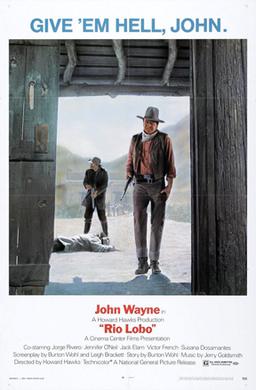
Rio Lobo is a 1970 American Western film directed and produced by Howard Hawks and starring John Wayne, from a screenplay by Burton Wohl and Leigh Brackett. The film was shot in Cuernavaca in the Mexican state of Morelos and in Tucson, Arizona. The musical score was composed by Jerry Goldsmith. It was the third Howard Hawks film varying the idea of a sheriff defending his office against belligerent outlaw elements in the town, after Rio Bravo (1959) and El Dorado (1966), both also starring John Wayne. Rio Lobo was the last film made by Hawks.

Rifles for Watie is a children's novel by American writer Harold Keith. It was first published in 1957, and received the Newbery Medal the following year.

Walter Frank Hermann Wolff was an American actor whose film career began with roles in five 1958–61 Roger Corman productions and ended a decade later in Rome, after many appearances in European-made films, most of which were lensed in Italy.

Charles Lawrence Thomas was a United States Army soldier who received the Medal of Honor for heroism in September 1865 during the Powder River Expedition in Montana and Dakota Territory.

John Crawford was an American actor. He appeared in a 1961 episode of The Twilight Zone, called "A Hundred Yards Over the Rim", and in several Gunsmoke episodes. He had a key role in the 1975 film Night Moves, a crime thriller starring Gene Hackman. He also played the mayor of San Francisco in 1976's The Enforcer, the third Dirty Harry film featuring Clint Eastwood, as well as the Chief Engineer in Irwin Allen's classic 1972 box-office smash and disaster-film epic The Poseidon Adventure.
Sergio Citti was an Italian film director and screenwriter, born in Rome. He often worked with Pier Paolo Pasolini but also worked for others such as Ettore Scola. His own films include We Free Kings, for which he won a Silver Ribbon for Best Original Story.

The Skirmish at Island Mound was a skirmish of the American Civil War, occurring on October 29, 1862, in Bates County, Missouri. The Union victory is notable as the first known event in which an African-American regiment engaged in combat against Confederate forces during the war.

Bridget Divers or Michigan Bridget was an Irish immigrant who rode with the First Michigan Cavalry during the American Civil War. Variations of her surname include Diver, Divers, Deaver, Deavers, Devens, Devins and Devan; and she was known as "Irish Biddy" to Sheridan's men. Unfortunately, none of the accounts of her combat activities come from a verifiable eye-witness. Much of the literature from the middle of the 19th century is written in an idealized and highly stylized form, conforming to the standards of propriety in that era. Nonetheless, careful analysis of surviving records show Michigan Bridget to have been a real person, after removing the almost mythological language frequently used to describe her exploits.
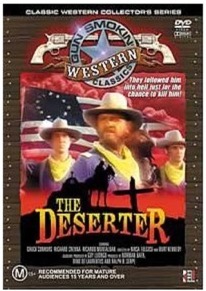
The Deserter, also known as The S.O.B.s and The Devil's Backbone is a 1970 Italian-Yugoslav American international co-production Western film produced by Dino De Laurentiis. It was directed by Burt Kennedy and written by Clair Huffaker.

The 24th Ohio Infantry Regiment was an infantry regiment in the Union Army during the American Civil War. In the Battle of Cheat Mountain, the 24th Ohio and 14th Indiana, with around 300 engaged, defended Cheat Summit Fort—also called Fort Milroy—from around 4,500 Confederates of Anderson, Rust, and Gen. H. R. Jackson's brigades, leading to a shameful defeat for Confederate General Robert E. Lee. The regiment played "The Star-Spangled Banner" while marching out of Pittsburg Landing and almost lost all of its commissioned officers in the Battle of Stones River. The 24th Ohio is supposed to have suffered its only defeat on the battlefield at the Battle of Chickamauga.
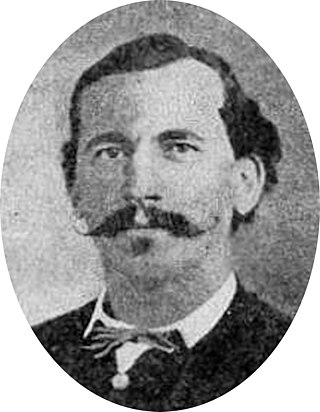
William Taylor was a Union Army soldier and officer during the American Civil War. He received the Medal of Honor for gallantry during two separate Virginia engagements. The Battle of Front Royal in 1862 and the Battle of Globe Tavern in 1864.
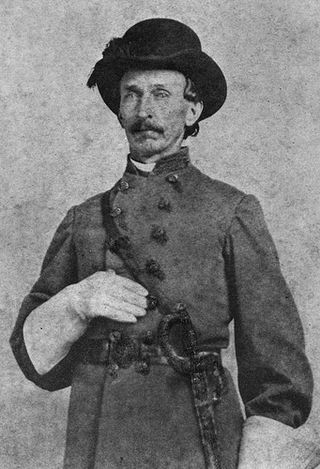
John Jackson Dickison, known as J. J. Dickison, was an officer in the Confederate States Army during the American Civil War. Dickison is mostly remembered as being the person who led the attack which resulted in the capture of the Union warship USS Columbine in the "Battle of Horse Landing". This was one of the few instances in which a Union warship was captured by land-based Confederate forces during the Civil War and the only known incident in U.S. history where a cavalry unit sank an enemy gunboat. Dickison and his men were victorious in all of his raids against the Union troops in Florida, including his raid in Gainesville what is known as the Battle of Gainesville. Tragedy struck Dickison, when one of his sons, both of whom served under his command, was killed during a raid.
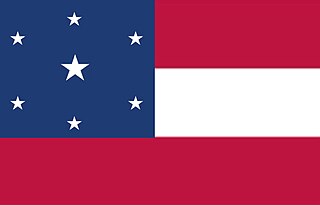
The Mason Henry Gang were bandits operating in Central and Southern California in 1864–1865. As the Civil War was in progress, they were able to pose as Confederate Partisan Rangers, and their original mission was to rid the area of (anti-slavery) Republicans. But when it became clear that the Confederate cause was lost, they turned to outlawry, plundering and killing without mercy.

The 3rd Louisiana Infantry Regiment was a unit of foot soldiers from Louisiana that fought in the Confederate States Army during the American Civil War. The regiment distinguished itself at Wilson's Creek in 1861. The 3rd Louisiana fought at Pea Ridge, First Corinth, Iuka, and Second Corinth in 1862. The unit defended Vicksburg in 1863 where it was captured. At Vicksburg, the unit's fortification was twice blown up by powerful land mines. The surviving soldiers were paroled and exchanged, after which they performed guard duty for the rest of the war.

The 24th and 25th Consolidated Texas Cavalry Regiment was a unit that originally consisted of two regiments of mounted volunteers that served in the Confederate States Army during the American Civil War. However, by the time the two regiments were consolidated, they fought as infantry. Both regiments organized as cavalry near Hempstead, Texas in April 1862 and were dismounted to fight as infantry in July 1862. The two regiments served in the same brigade and were captured at the Battle of Arkansas Post in January 1863. After being sent to Northern prison camps, the soldiers were exchanged in April 1863. Assigned to the Army of Tennessee, the two regiments were consolidated with two additional Texas cavalry regiments and in 1863 fought as infantry at Liberty Gap, Chickamauga, Missionary Ridge, and Ringgold Gap. In 1864, the other two Texas regiments were detached and the consolidated 24th and 25th fought as a separate infantry unit in the Atlanta campaign, at Franklin, and at Nashville. For the Carolinas campaign, the 24th and 25th fought at Bentonville before being reconsolidated with other Texas regiments and surrendering in April 1865.



















